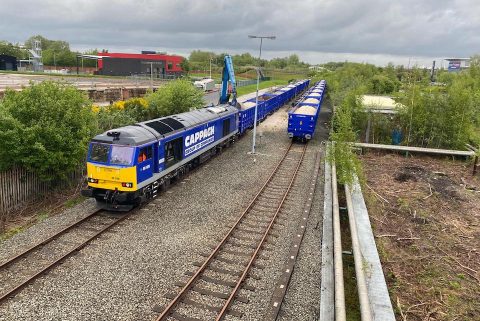Private rail freight sector now dominates the market

Last year was the year of the private sector in rail. For the first time in history, private companies or subsidiaries of large holdings that act like a private company account for a majority of the European rail freight market, with a market share of 51 per cent. This is in comparison to the public sector; the national historic incumbents in a country linked to a holding company.
This was concluded by the European Rail Freight Association (ERFA). This Brussels-based industry association has been monitoring the liberalisation of the rail freight market quite closely. Last year in March, it reported that the balance was almost equal. This balance was tipped in favour of the private market later that year.
From 25 to 51%
“In 2010, the market share of challengers was still at 25 per cent and incumbents were dominating the market. This achievement reflects the success of opening national rail freight markets to competition and highlights the need to ensure European legislation is adapted to meet the needs of new entrants”, the association notes.
It uses the term challengers instead of private sector, because an incumbent active in another country acts more like a private company than a national incumbent does in its own country. For instance, DB Cargo Polska acts and operates very differently to DG Cargo”, explains Conor Feighan, ERFA Secretary General.
New markets
In most cases, challengers and new market entrants have not replaced existing trade flows, but have created new markets for rail freight, notably in the intermodal and logistic sector, ERFA notes. This has resulted in rail freight being able to offset reductions in traditional traffic, such as fossil fuel transportation, with new services, whilst also giving choice to customers and better meeting customers’ requirements.
The trajectory for rail freight becoming increasingly international – the majority of rail traffic in EU traffic is border crossing– must also be noted, it continues. There will therefore be an increasing pressure to ensure that legislation surrounding rail freight, both at European and national level, reflects this market reality.
Why this is a good thing
ERFA praises the business of the challengers, as they are “efficient, growth-focused, and drive innovation in customer service and deployment of new technology”.
In contrast with the incumbents, they focus on a more narrow business and geographical area, and they are lean and agile, in comparison to the complex legacy processes of the holding companies. This makes them distinctively sharper, simpler, and better, the group says, although their offering is often limited to block trains or intermodal traffic. Incumbents often include a wider offering.
Still work to do
Despite these positives, ERFA says the European Union is not on course to meet its modal shift objectives. “As highlighted in the recently published European Court of Auditors report on Intermodal Freight Transport, there are still legislative hurdles which prevent rail freight’s further growth.
“It is essential that, amongst other policy measures, the European Institutions address infrastructure not meeting user needs, outdated legislation on combined transport as well as obstacles such as poor international coordination of capacity and strict language requirements impacting the competitiveness of rail freight. It also needs to be highlighted that any new regulation imposing investments on market players must be preceded by a detailed and reliable cost–benefit assessment and developing a realistic implementation and financing plan.”






A pity as well, that railway infrastructure is short of redundancy. Edge of industry, load capacity, now is too low!
Current mantra, “optimal maintenance”, is a symptom of a track standard, that not is optimal.
(“Attending maintenance” is repairing!)
Any investment now should ensure redundancy, readiness, for meeting competition from fellow modes, which add load capacity – for lower costs, etc.!